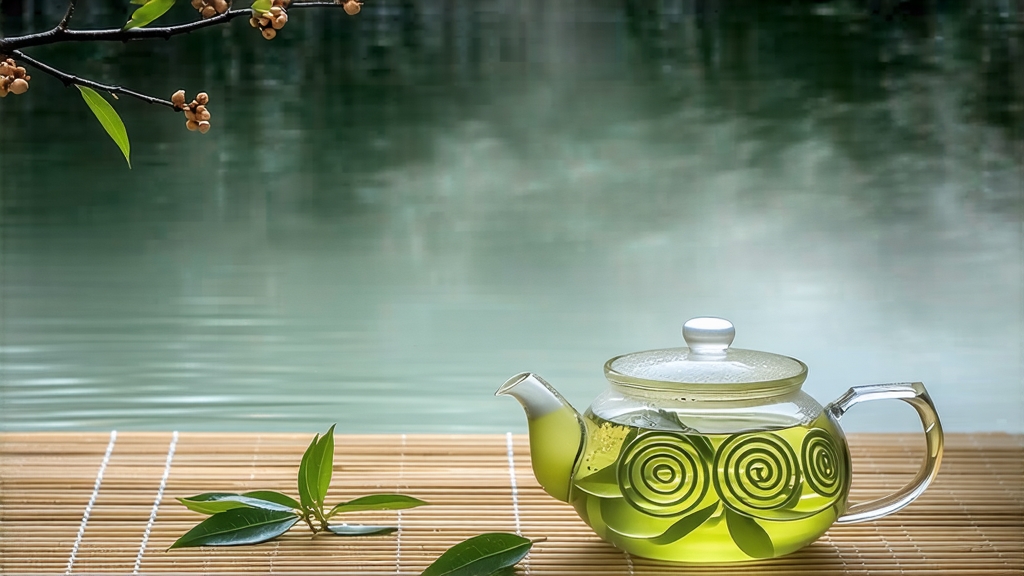
Among the pantheon of Chinese green teas, none carries a name as poetic—or a leaf as petite—as Biluochun. Literally “Green Snail Spring,” the tea is prized for its tiny, tightly rolled spirals that resemble baby sea-snails dusted with white down. Yet behind the whimsical shape lies a 1,200-year saga of emperors, monks, biologists, and artisans who turned a wild riverside shrub into one of the world’s most delicate beverages. This article invites international drinkers to journey through Biluochun’s history, terroir, craftsmanship, brewing science, and sensory language so that every cup can be tasted as a sip of living Chinese culture.
-
Historical vignettes: from scarecrow tea to tribute elixir
The first written record appears in the Tang Dynasty “Tea Canon” of Lu Yu (760 CE), which mentions “strange fragrant tea growing by the water” in the Lake Tai region. Local legend tells of tea pickers who stored buds inside their bamboo shirts while working; body heat accidentally fixed the green flavour and released an explosive aroma that startled farmers into naming the tea “Scare-Fragrance” (Xia Sha Ren Xiang). During the Kangxi reign (1662-1722) the emperor—touring the lower Yangtze—sampled the tea, found its perfume “green as a snail and green as spring,” and rechristened it Biluochun. Thereafter 150 mu of Dongting Mountain groves became imperial tribute gardens; boatloads of silver were paid for a single jin, and court poets compared its infusion to “liquid jade moonlight.” Modern historians note that this royal patronage created the earliest documented case of appellation control: only leaves picked on Dongting’s East and West peaks could bear the name. -
Terroir: an island of fruit and fog
Dongting Mountain is actually two peninsulas thrusting into vast Lake Taihu, China’s third-largest freshwater body. Warm daytime lake vapour rises and meets cool night air, forming a 200-metre fog belt that filters sunlight into soft, diffused photons—ideal for slow amino-acid accumulation. The soil is acidic quartz sandstone rich in iron and zinc; drainage is so rapid that roots are forced to struggle, concentrating aromatic precursors. Inter-cropping is unique: every tea bush is under-planted between fruit trees—peach, plum, apricot, loquat, and bayberry—whose blossoms drop petals that ferment lightly on the soil, adding floral lactones picked up by tea roots. Microbiologists have isolated terpene compounds in Biluochun absent in other green teas, explaining its signature peach-skin nose. -
Cultivar genealogy: two bushes and their babies
Authentic Biluochun comes from two clonal shrubs registered as “Dongting Small-Leaf Species” and “Fuding Large-Leaf White.” The former gives the classic curled spiral; the latter, introduced in 1987, yields a slightly plumper curl and higher polyphenol content for export markets. Breeders at Jiangsu Tea Institute have since released “Su Cha No. 3,” “Zao Bei,” and “Xiang Bei,” all selected for cold tolerance and early budding, yet purists insist only seed-propagated old-stock bushes on the two peaks deserve the ancient name. DNA bar-coding shows these bushes share 97 % similarity with Yunnan large-leaf assamica, hinting that Tang-era monks may have carried seeds north along the Grand Canal. -
Picking calendar: the 6-hour rule
Harvest begins when 50 % of buds reach “one bud with one half-open leaf” stage, usually between Vernal Equinox and Qingming (20 March – 5 April). Pickers—mostly women wearing bamboo hats to avoid perfume contamination—pluck only between 07:00 and 13:00 when lake mist lifts and surface moisture evaporates. Leaves are placed in shallow bamboo trays lined with mosquito-net silk; depth never exceeds 3 cm to prevent bruising. A veteran picker’s daily quota is 600 g fresh leaves, which shrink to 150 g finished tea, itself enough for only 30 cups. After 13:00, rising temperatures activate enzymatic browning; any leaf picked later is diverted to cheaper “rain tea” grades. -
Crafting the spiral: hand, wok, and maths
With